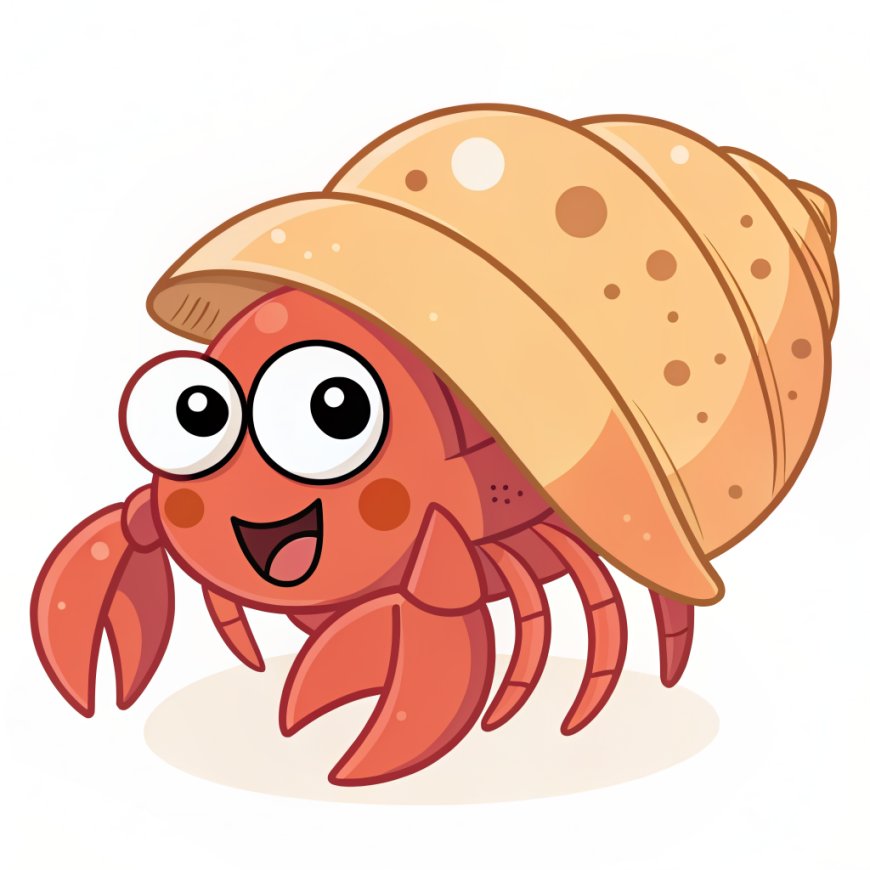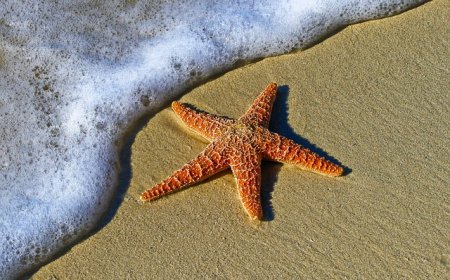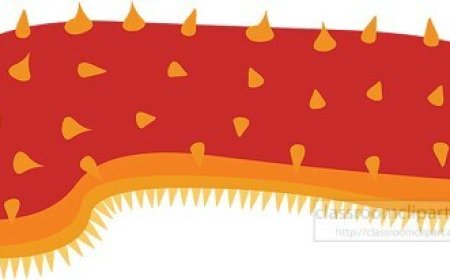All About Hermit Crabs: Shell-Swapping Crustaceans of the Coast
Learn about hermit crabs in this fun and educational article for students. Discover how they live, grow, find shells, and protect the shoreline. Includes quiz, vocabulary, and kid-friendly summary.

🐚 Hermit Crabs: Shell-Swapping Crustaceans of the Coast
Hermit crabs are not really hermits, and they’re not true crabs either! These clever crustaceans are known for carrying borrowed shells on their backs to protect their soft bodies. They live in oceans and along coastlines around the world, from sandy shores to rocky tide pools.
Hermit crabs are small but mighty members of the ocean’s cleanup crew. Their quirky behavior, teamwork, and ever-changing homes make them fascinating to study—and fun to watch!
🌍 Where Hermit Crabs Live
There are over 800 species of hermit crabs. Some live on land, but most live in the ocean, especially in:
- Tide pools
- Shallow coastal waters
- Seagrass beds and coral reefs
- Mangroves and sandy bottoms
Marine hermit crabs use empty snail shells to protect their soft abdomens. They are often found crawling across the seafloor or hiding in crevices.
🦀 Body Structure and Adaptations
Hermit crabs have some body parts like other crustaceans—but with a twist!
- Hard head and claws (called chelae) for protection and grabbing food
- Soft, curled abdomen that must be hidden inside a shell
- Asymmetrical body, curved to fit inside snail shells
- Walking legs and smaller legs inside the shell to hold on tight
- Two pairs of antennae for touch and smell
- Compound eyes on stalks for spotting danger
Since their abdomens are not protected by a hard exoskeleton, they must find and carry a shell at all times to stay safe.
🐚 The Shell Shuffle: Why They Switch Homes
Hermit crabs do not grow their own shells. Instead, they look for abandoned snail shells that fit just right.
As they grow, they must:
- Leave their old shell
- Find a new, slightly bigger one
- Quickly switch without being eaten or drying out
Sometimes multiple crabs gather around one shell and wait in line to trade. This is called a “vacancy chain”, and it shows how social hermit crabs can be!
🍽️ What Hermit Crabs Eat
Hermit crabs are omnivores and scavengers, which means they eat a wide range of food, including:
- Algae and seagrass
- Tiny animals and plankton
- Dead fish and plant matter
- Leftover bits from other animals
They use their claws to pick up food, and some use smell to find meals. By cleaning up the ocean floor, hermit crabs help recycle nutrients and keep ecosystems healthy.
🛡️ Defense and Behavior
Hermit crabs have many ways to protect themselves:
- Hide in their shells at the first sign of danger
- Use their large claw to block the shell’s entrance
- Retreat into crevices or under rocks
- Use camouflage—some even decorate their shells with sea anemones or sponges for extra protection!
They are not strong fighters, but they are clever survivors. If a predator tries to pull them out, they anchor their body deep inside the shell.
🐣 Molting and Life Cycle
Hermit crabs grow by molting, which means they:
- Shed their old exoskeleton
- Hide while their new one hardens
Molting can be dangerous—they are soft and vulnerable for days. Some hermit crabs bury themselves in sand to stay safe while molting.
Most marine hermit crabs:
- Release their eggs into the water
- Eggs hatch into larvae that float in plankton
- Larvae go through several stages before settling and finding their first shell
They can live for up to 30 years in the wild if they find safe homes and food.
⚠️ Threats and Conservation
🚨 Dangers:
- Pollution, especially plastic, which they sometimes try to use as shells
- Loss of shells, due to overcollection or habitat destruction
- Oil spills and dirty water, which affect their food and health
- Climate change, which alters their shallow-water homes
🛡️ Conservation:
- Protecting coastlines and reef habitats
- Leaving empty shells in tide pools for wild crabs
- Not removing wild crabs or shells from nature
- Supporting clean beaches and ocean cleanup efforts
🎉 Fun Facts About Hermit Crabs
- They can live in coconut shells, glass jars, and bottle caps if shells are missing
- Some species carry sea anemones on their shells for protection
- Hermit crabs can live alone or in huge social groups
- They change shells many times in their lives
- Hermit crabs can regrow lost claws or legs after molting
🧠 Vocabulary List
- Crustacean – A group of animals with hard shells and jointed legs (like crabs and lobsters)
- Abdomen – The soft rear part of a hermit crab’s body
- Molting – The process of shedding and regrowing an exoskeleton
- Vacancy chain – A line of crabs waiting to move into a bigger shell
- Scavenger – An animal that eats dead or leftover matter
- Exoskeleton – A hard outer shell that protects an animal’s body
- Camouflage – Blending in with the environment
- Antennae – Sensory organs that help animals feel and smell
- Larva – A young animal that looks different from the adult
- Omnivore – An animal that eats both plants and animals
✅ Hermit Crab Quiz: Crawl Into This Challenge
1. Why do hermit crabs use shells?
A. To store food
B. For decoration
C. To protect their soft bodies
D. To swim faster
✅ Answer: C. To protect their soft bodies
2. What do hermit crabs eat?
A. Only leaves
B. Dead plants and animals, algae, and plankton
C. Just fish
D. Only sand
✅ Answer: B. Dead plants and animals, algae, and plankton
3. What is molting?
A. Changing shells
B. Getting a sunburn
C. Shedding the old exoskeleton to grow
D. Hiding from predators
✅ Answer: C. Shedding the old exoskeleton to grow
4. What is a vacancy chain?
A. A crab parade
B. A line of crabs waiting to switch shells
C. A game crabs play
D. A broken shell
✅ Answer: B. A line of crabs waiting to switch shells
5. What can help protect hermit crabs in nature?
A. Taking them home
B. Giving them metal shells
C. Leaving empty shells on the beach
D. Feeding them chocolate
✅ Answer: C. Leaving empty shells on the beach
🧒 Kid-Friendly Summary
Hermit crabs are small, smart crustaceans that carry borrowed shells to protect their soft bellies. They’re always on the lookout for a better home, and they help keep the ocean clean by eating leftovers and waste.
These curious crabs aren’t loners—they gather in groups, change shells often, and even team up with sea creatures for protection. Let’s help them by keeping beaches clean and leaving wild crabs in the wild!



















































